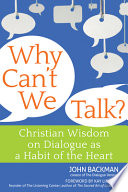

Communication is the cornerstone of all relationships, whether personal or professional. The book delves into how effective communication fosters understanding, empathy, and connection. It emphasizes that miscommunication can lead to conflict and disconnection. The authors argue that many relational issues stem from a lack of open dialogue. They provide strategies to improve communication skills, such as active listening, expressing feelings clearly, and creating a safe space for conversation. By mastering these skills, individuals can enhance their relationships, resolve conflicts more effectively, and build stronger bonds with others.
Continue readingThe book identifies various barriers that hinder effective communication. These include emotional barriers, cultural differences, and preconceived notions. The authors explain how fear, anxiety, and past experiences can create mental blocks that prevent honest conversation. They provide examples of how these barriers manifest in everyday interactions and suggest methods to overcome them. Recognizing these barriers is the first step toward improving communication. The book encourages readers to reflect on their own communication styles and identify personal barriers that may be affecting their relationships.
Continue readingVulnerability is portrayed as a strength rather than a weakness in the book. The authors argue that being open and honest about one’s feelings fosters deeper connections. They discuss how vulnerability allows individuals to share their true selves, which can lead to more authentic and meaningful conversations. The book provides insights on how to cultivate vulnerability in communication by sharing personal stories, expressing fears, and being willing to listen to others' experiences. This idea highlights the necessity of creating a safe environment where individuals feel comfortable being vulnerable.
Continue readingNonverbal communication plays a significant role in how messages are conveyed and understood. The authors explore the various forms of nonverbal cues, such as body language, facial expressions, and tone of voice. They emphasize that nonverbal signals can often communicate more than words themselves. The book provides practical tips for becoming more aware of one’s own nonverbal communication and interpreting the cues of others. By improving nonverbal communication skills, individuals can enhance their overall communication effectiveness and reduce misunderstandings.
Continue readingIn today’s digital age, the way we communicate has drastically changed. The book discusses the implications of digital communication platforms, such as social media and texting, on interpersonal relationships. While these platforms offer convenience, they can also lead to miscommunication and a lack of emotional connection. The authors argue for a balanced approach to digital communication, encouraging readers to prioritize face-to-face interactions whenever possible. They provide strategies for navigating digital communication effectively, ensuring that it complements rather than replaces personal connections.
Continue readingConflict is an inevitable part of any relationship, but how it is managed can determine the health of that relationship. The book offers various conflict resolution strategies that emphasize the importance of communication. The authors advocate for addressing conflicts directly and constructively rather than avoiding them. They provide techniques such as using 'I' statements, focusing on the issue rather than the person, and seeking common ground. By employing these strategies, individuals can resolve conflicts more amicably and strengthen their relationships in the process.
Continue readingEmpathy is essential for effective communication and understanding. The book discusses how empathetic communication can bridge gaps between individuals and foster deeper connections. The authors suggest practices for developing empathy, such as active listening, asking open-ended questions, and validating others’ feelings. They emphasize that empathy not only enhances personal relationships but also plays a crucial role in professional settings. By cultivating empathy, individuals can improve their communication skills and create a more inclusive and understanding environment.
Continue reading